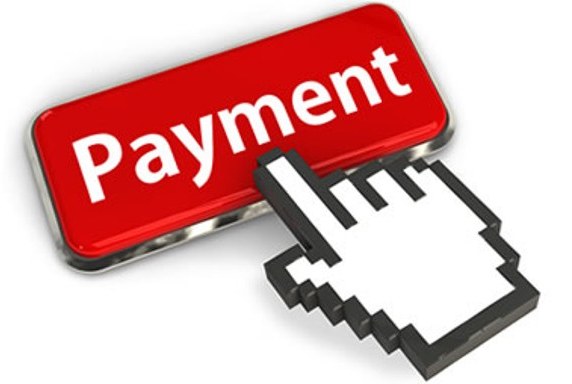
The payments industry has been a place of rapid evolution and innovation for the last several years. But even with rapid innovation within the payments industry, technology in society has stayed ahead of the industry.
With so many options available for payments in today’s world it’s difficult for any one method to achieve the same ubiquity that other industries have reached. New technology is always popping up so often that we can expect that the payment industry will continue to be pushed to keep up and provide more convenience for users through it.
As consumers continue to embrace innovation going forward, there’s one thing for sure – payments options will strive to become more convenient and offer more value.
We can expect the industry to walk a careful line between speed to market with new innovations and the need for security for users. With that established, there are some safe bets to be placed about what payments are going to look like in 2020.
NFC mobile payments
So far, NFC (near field communications) payment options have been slowly adopted by consumers. Citing an apprehension for strength of security measures enabled with this type of payment and an initial limited availability with regards to merchant card readers in 2016, only 13.1% of American consumers had used the NFC Apple Pay functionality
However, that number is on the rise and can be expected to continue to grow as more of the younger demographic adopts NFC mobile payments and the option gains traction with demographics beyond those early adopters.
I’m convinced that we will soon be in an age were paying with our smart phones, smart watches, and other technology becomes one of the most widely adopted methods.
By 2020, it’s likely that payments will continue to be very diversified in terms of method, but with increased confidence in NFC we can expect that mobile will be much more prevalent in society.
Biometric payment methods
Moving from physical payments using mobile in-store to digital payments on mobile devices themselves brings in the advances in technology as one of the major drivers of innovation for payments.
Biometric payment options are nothing new. They’ve been integral in the roll out of in-store NFC verification using fingerprint scans, but innovations in methods using voice recognition retinal scanners are being tested as an alternative.
While it’s unlikely that consumers will widely adopt the retinal scanner option to any wide degree by 2020, voice recognition has considerable promise as an option, specifically for the banking industry.
Making payments on mobile devices, rather than with them, will likely be at the forefront of biometric payments and payment verification. The question is what will the next generation devices offer in terms of capability and convenience.
Collaboration
The payment industry has been fragmented for a long time. This is part of the reason for the problem I mentioned earlier about the lack of any one service’s dominance or any one company to become ubiquitous.
I believe the fragmentation will at least have begun to decrease by 2020. Current solutions could work together within the private-sector to breach new ground for consumers in terms of convenience and security.
One area that I expect to see drastically improved is ACH transfers between service providers. By working together to provide for faster transfers and more transparency for consumers, we will start to see the collaboration and ubiquity within an industry that is overdue for it.
Integration
We already have the ability to use multiple payment processing systems together and tie them each to a single transaction report as merchants. The adoption, especially among small businesses, of this capability will be drastically higher in 2020.
With so many options to collect payments from consumers both online and in-store, integration will become more of a necessity than a convenience. This has a lot of distinct benefits for both the merchant and consumer,
With integrated payment processing solutions making it faster for merchants to collect a complete report, reducing the risk of human error that comes with manually syncing up each sales channel, reducing labor costs associated with payment processing, and boosting cash flow by allowing the consumer a variety of payment options, it’s just a matter of time until integration becomes the standard.
In-house person-to-person convenience
This has been in the works for quite some time now. Since 2011, a handful of the big banks have been collaborating to disrupt the person to person services offered by companies like Venmo and Paypal.
P2P services have historically been dominated by the companies mentioned above. With an easy to use platform for sending money between people with just an email address or phone number, Venmo and Paypal gets the funds transferred between accounts instantly and to your bank as quick as 1 day.
Zelle is the major financial institution’s answer to these services and it was rolled out in June. This collaboration lets bank customers transfer between one another in a matter of minutes using an email or phone number instead of the previous requirement of routing and account numbers.
With this type of collaboration already breaking ground for about a dozen banks, we can expect that it will become commonplace among the vast majority of financial institutions in 2020. Furthermore, this puts the existing players in P2P behind the eight ball to innovate and offer additional value if they want to remain in the space.
Added value across the board
This brings me to my last point. As innovation, collaboration and advances in technology continue to make things easier for consumers, we can expect that payment processing services will need to get creative and add value in new ways to retain business.
In 2020, we can expect to see increased partnerships with payment processing services and merchants, offering unique discounts and other forms of secondary value to the consumer for using their services.
It’s truly an exciting time for the payment industry as well as the consumers who will benefit from the competition. 2020 may be less than 3 years away, but the exponential improvements to payments and technology will likely make the industry a much more efficient place in that short time.





![Binance Review: How the Crypto Exchange Works [2024]](https://www.feedroll.com/wp-content/uploads/2024/03/binance-trading-100x100.png)



